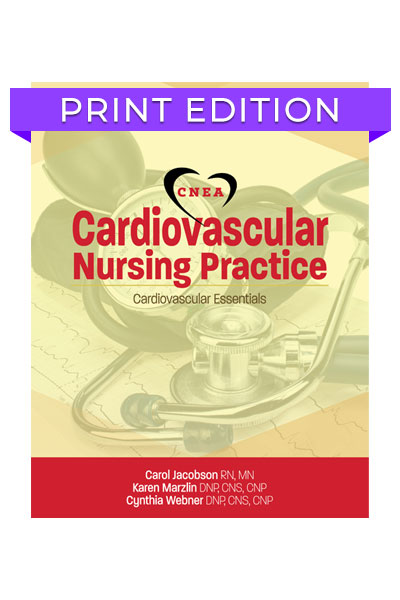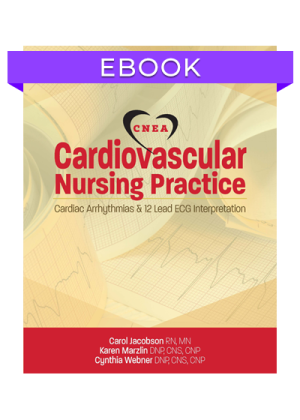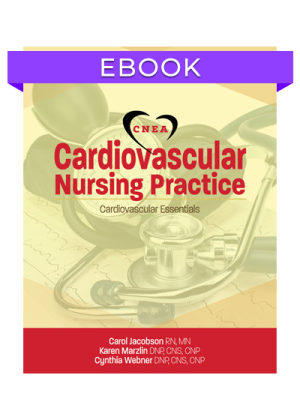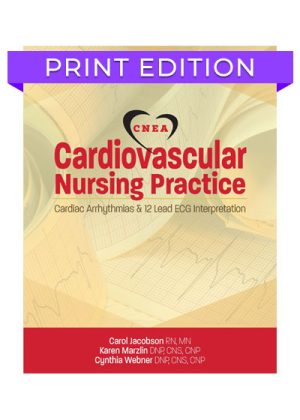Description
The 3rd Edition of Cardiovascular Nursing Practice is published in 6 separate books that can be purchased individually or as a complete set.
Introducing Book 2: Cardiac Essentials
Cardiac Essentials includes physiology, assessment, hemodynamics, and comprehensive pulmonary practice principles. The chapter on pulmonary practice principles has new and expanded content to challenge you and take your practice to a new level of excellence.
- New content on evaluation of pulmonary disease
- Additional content on methemoglobin and carboxyhemoglobin
- Advanced concepts in acid base balance
- Expanded content on ventilator management
- More linking knowledge to practice applications
This book will allow you to grow from Novice to Expert. If you are a new graduate or a seasoned APRN, this book has what you need to achieve your clinical goals.
You can purchase this new release in a print version or in an eBook version for use with your favorite e-reader.
This book can be purchased with the option of earning 28.5 CE. The CE process is paperless with online access to the post test, evaluation, and CE certificate at the time of purchase.
Content includes:
Cardiovascular Anatomy and Physiology
- Basic Cardiac Anatomy
- Circulatory System
- Cardiac Cycle
- Coronary Circulation
- Cardiac Action Potential
- Contractile Properties of Cardiac Muscle
- Cardiac Conduction System
- Hemodynamic Principles
- The Cardiopulmonary Circuit and Delivery of Oxygen
- Neurological Control of the Heart and Blood Pressure
- Regulation of Fluid Balance
Cardiovascular History Taking and Physical Examination
- Health History
- Physical Exam
- Auscultation – Heart Sounds
Pulmonary Physiology and Practice Principles
- Control of Breathing
- Anatomy of the Pulmonary System
- Pulmonary Physiology
- Evaluation of Pulmonary Disease
- Oxygen Delivery, Consumption and Reserve
- Acid Base Balance
- Oxygen Therapy and Mechanical Ventilation
Hemodynamics
- Hemodynamic Concepts
- Altered Hemodynamic States Due to Cardiac Abnormalities
- Oxygen Delivery to Tissues
- Invasive Hemodynamic Monitoring
- Noninvasive and Less Invasive Monitoring
- Left Ventricular Function Curves
- Using Functional Hemodynamics to Evaluate Fluid Responsiveness
Linking Knowledge to Practice sections throughout the book help you apply concepts to clinical practice. At the end of each chapter, Practice ABGs and Test Your Knowledge Questions help validate your understanding of content. Answers to all practice ABGs and test questions are included.





Reviews
There are no reviews yet.